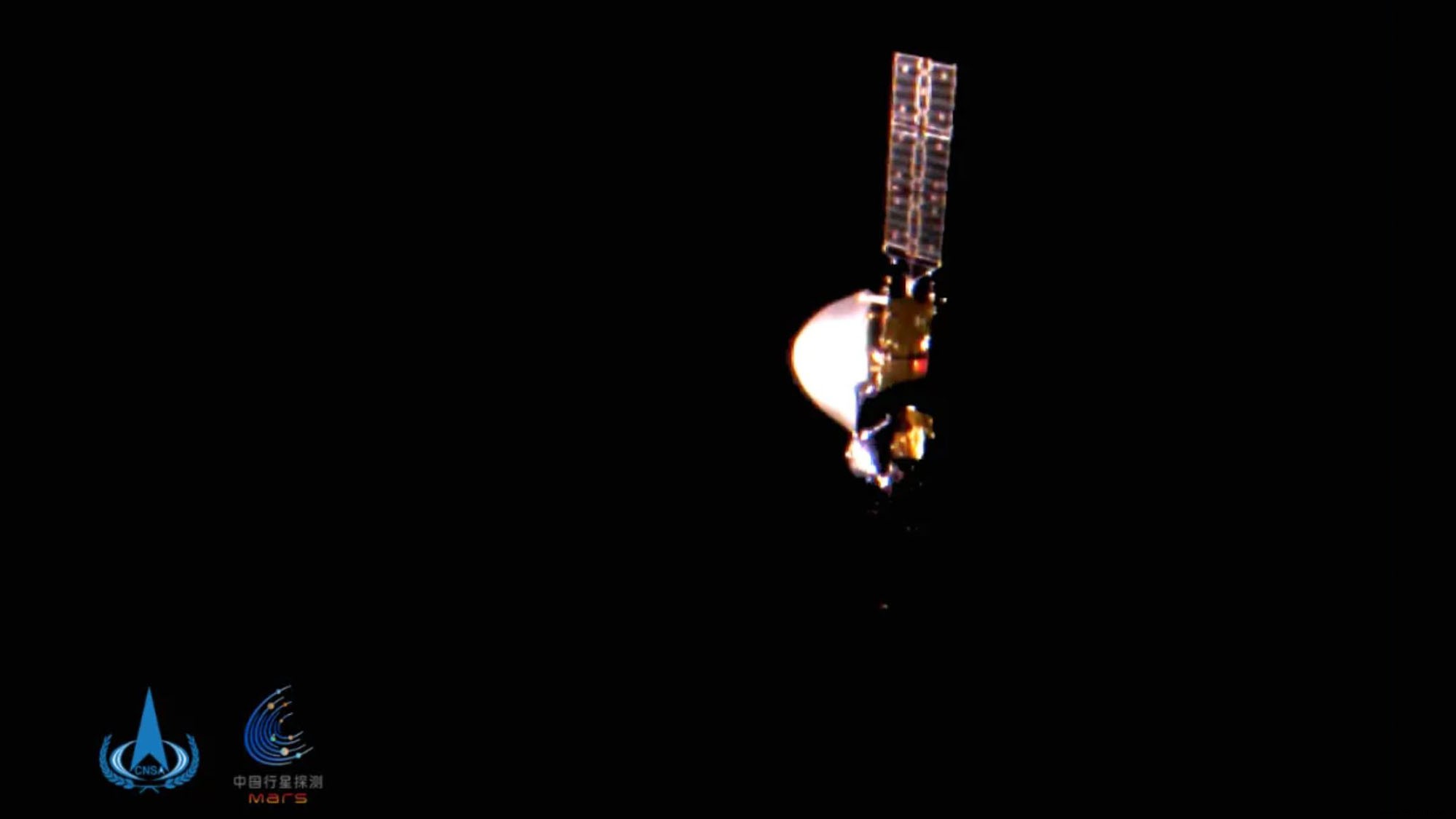The Tianwen-1 mission successfully entered Mars orbit on Wednesday, February 10. In order to receive as much data as possible, the Chinese authorities had a huge antenna built, especially for the occasion.
The Tianwen-1 mission, which includes an orbiter and a rover, entered Mars orbit on Wednesday, and plans to attempt a landing in May in a region called Utopia Planitia, a huge impact basin. If successful, it will be a first for China, which has already landed on the Moon three times. It will also be only the second country to land a craft gently on the red planet after the United States.
Waiting for this landing, the Chinese orbiter will be able to start sending data back. Its main objective will be to probe the distribution of water ice in the Martian subsoil. It will also be about mapping the geological structure of the planet.
To do this, it will be equipped with two cameras of medium (MoRIC) and high resolution (HiRIC), a ground-penetrating radar (MOSIR), a spectrometer infrared (MMS), a magnetometer (MOMAG) and two particle detectors (MINPA and MEPA).
However, sending such information back to Earth – across millions of miles – presents its own challenges.
Also the Chinese authorities built an antenna 70 meters in diameter especially for the occasion. You will find it in the city of Tianjin, in the north of the country. Built since October 2018, the huge 2,700 ton parabola was officially handed over to the National Astronomical Observatory of China (NAOC) – the operator – on February 3. It is now ready to support the Tianwen-1 mission, but also future deep space ventures.
“The antenna construction is intended to receive faint data from Martian scientific exploration over 400 million kilometers” , said Li Chunlai, deputy chief designer of the Mars exploration project in China. “With distance, the energy [of the signal] will become attenuated and denser, that is, we will receive less energy per unit area. So we need [an antenna] with a large area to collect enough energy” , he added.

The Chinese National Space Administration (CNSA) has just announce a shortlist of ten names for its Mars rover. All these proposals refer to Chinese mythological figures, Confucian concepts and legendary animals. The judges will then deliberate and announce a final name some time before the rover lands on the Martian surface.
The rover will join another vehicle, Perseverance. The American rover – the heaviest and most sophisticated ever sent to Mars – will attempt its landing a few weeks earlier (February 18) in the Jezero crater.